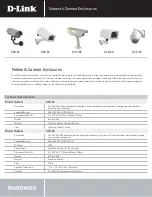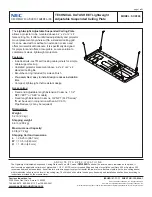
24
GAZELLE MANUAL
24
Original User Manual | Pedelec Impulse 2.0
Appendix A
Intended use of your bicycle
WARNING: Understand your bike and its intended
use. Choosing the wrong bicycle for your purpose
can be hazardous. Using your bike the wrong way is
dangerous.
No one type of bicycle is suited for all purposes. Your
retailer can help you pick the “right tool for the job” and
help you understand its limitations. There are many types
of bicycles and many variations within each type. There
are many types of mountain, road, racing, hybrid, touring,
cyclocross and tandem bicycles.
There are also bicycles that mix features. For example,
there are road/racing bikes with triple cranks. These bikes
have the low gearing of a touring bike, the quick handling
of a racing bike, but are not well suited for carrying heavy
loads on a tour. For that purpose you want a touring bike.
Within each of type of bicycle, one can optimize
for certain purposes. Visit your bicycle shop and find
someone with expertise in the area that interests you. Do
your own homework. Seemingly small changes such as the
choice of tires can improve or diminish the performance
of a bicycle for a certain purpose.
On the following pages, we generally outline the
intended uses of various types of bikes.
Industry usage conditions are generalized and evolving.
Consult your dealer about how you intend to use your
bike. "If your bike is equipped like legaly required it
might be used like explained in the following:"
High-Performance Road
CONDITION 1
Bikes designed for riding on a paved
surface where the tires do not lose
ground contact.
INTENDED To be ridden on paved
roads only.
NOT INTENDED For off-road, cyclocross, or touring with
racks or panniers.
TRADE OFF Material use is optimized to deliver
both light weight and specific performance. You must
understand that (1) these types of bikes are intended
to give an aggressive racer or competitive cyclist a
performance advantage over a relatively short product
life, (2) a less aggressive rider will enjoy longer frame life,
(3) you are choosing light weight (shorter frame life) over
more frame weight and a longer frame life, (4) you are
choosing light weight over more dent resistant or rugged
frames that weigh more. All frames that are very light
need frequent inspection. These frames are likely to be
damaged or broken in a crash. They are not designed to
take abuse or be a rugged workhorse.
See also Appendix B.
read Appendix A, Intended Use of your bicycle and
Appendix B, The lifespan of your bike and its components,
starting on page 28.
5. As required: If either brake lever fails the
Mechanical Safety Check (Section 1.C), don’t ride the bike.
Have your dealer check the brakes.
If the chain won’t shift smoothly and quietly from gear
to gear, the derailleur is out of adjustment. See your
dealer.
6. Every 25 (hard off-road) to 50 (on-road) hours
of riding: Take your bike to your dealer for a complete
checkup.
B. If your bicycle sustains an impact:
First, check yourself for injuries, and take care of them
as best you can. Seek medical help if necessary.
Next, check your bike for damage.
After any crash, take your bike to your dealer for a
thorough check. Carbon composite components, including
frames, wheels, handlebars, stems, cranksets, brakes, etc.
which have sustained an impact
must not
be ridden until
they have been disassembled and thoroughly inspected by
a qualified mechanic.
See also Appendix B, Lifespan of your bike and its
components.
WARNING: A crash or other impact can put
extraordinary stress on bicycle components, causing
them to fatigue prematurely. Components suffering
from stress fatigue can fail suddenly and catastrophically,
causing loss of control, serious injury or death.
















































